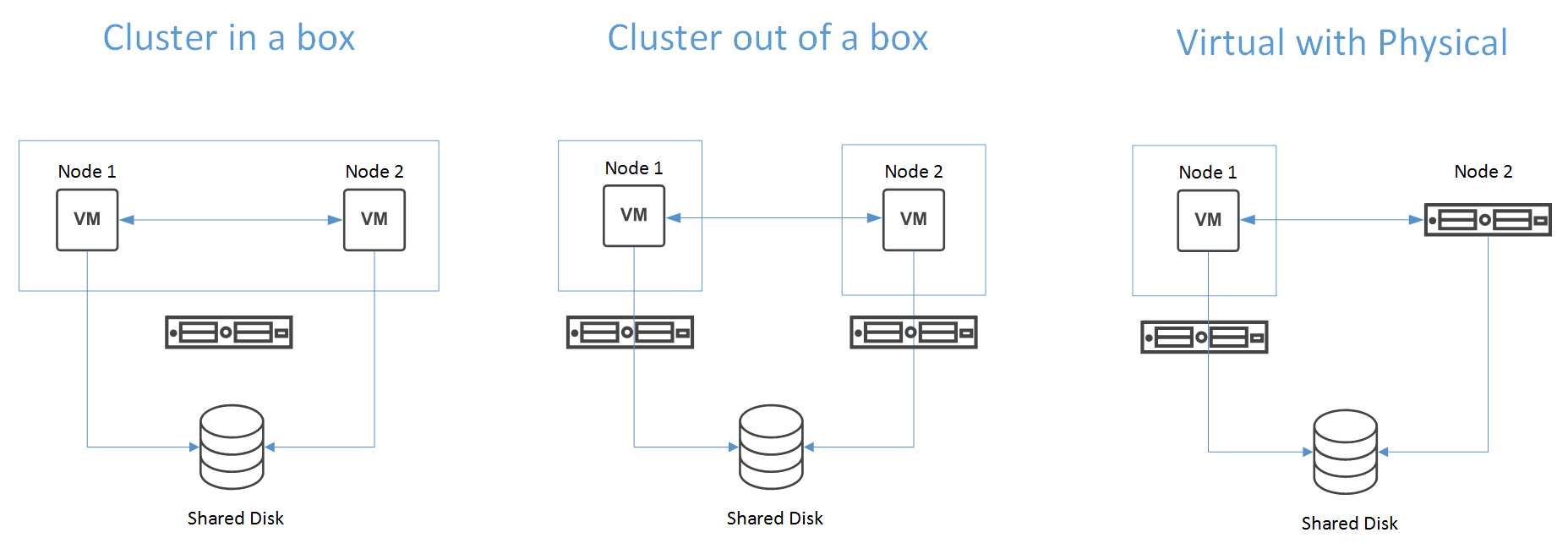Virtual machine clustering is an infrastructure configuration, where two systems and applications act as a single, logical unit. There is no direct connection to VMware vSphere. Clustering must be supported by the underlying operating system or the application itself.
In general, both systems must have simultaneous write access to the storage device so both can act as a primary or standby instance.
Mission-critical systems such as production databases are usually clustered, so in any situation, you have at least one instance available. For this reason, you can't use VMware HA technology because, as we have already explained, the VM restarts during the HA failover, resulting in application downtime. You can, in theory, use FT, but there will be limitations as well. In the case of FT, there are two significant disadvantages—performance degradation and support for a maximum of 4 vCPUs.
Clustering does not have such negatives, but configuration dramatically depends on the application.
VMware vSphere supports the following clustering options:
- Cluster-in-a-Box: This is when VMs are clustered on the same ESXi host. The shared disks or quorum (either local or remote) are shared between the VMs. CiB can be used in test or development scenarios. However, this solution does not protect in the event of hardware failure.
- Cluster-out-of-the-Box: The cluster is deployed to two VMs and the two VMs are running across two different ESXi hosts. This protects against both software and hardware failures. Physical RDMs are the recommended disk choice. Shared storage/quorum should be located on a fiber channel SAN or via an in-guest iSCSI initiator.
- VM and physical server clustering: This involves one cluster node running natively on a physical server, while the other runs as a VM. This mode can be used to migrate from a physical two-node deployment to a virtualized environment. Physical RDMs are the recommended disk option here. Shared storage/quorum should be located on a fiber channel SAN or through an in-guest iSCSI initiator.
Different cluster solutions are shown in the following diagram:

